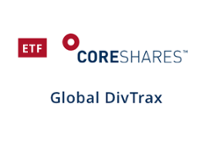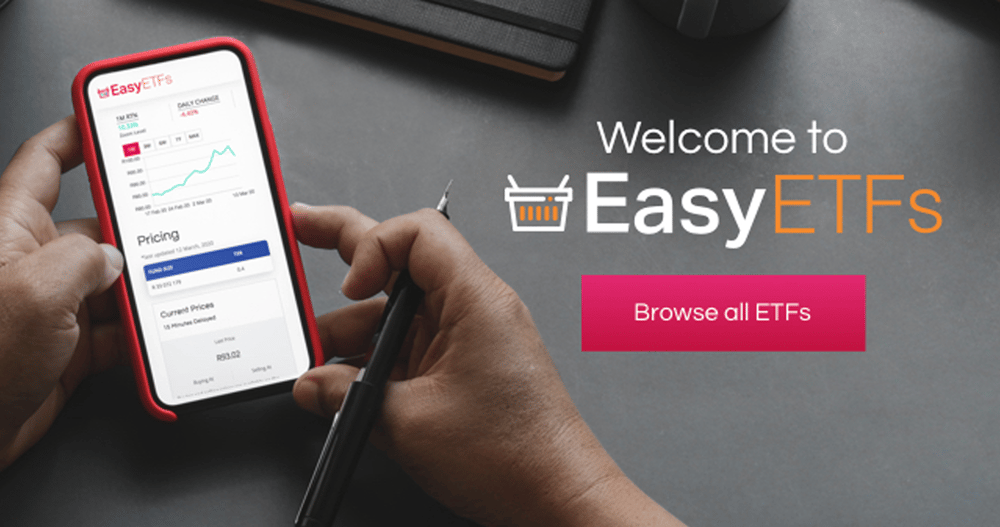ETF Picks and November 2020 Reviews by Intellidex
Intellidex ETF Picks
Nothing gets better than a couple of Exchange Traded Fund (ETF) picks this festive season by one of SA Inc’s leading market research and financial services firm, Intellidex
Macroeconomic overview
The market remains optimistic, despite rising Covid-19 infections, and vaccine approval and rollout will drive further market positivity. It seems the UK will approve the vaccines of BioNTech/Pfizer and Moderna before the end of the year. The US could approve shortly after the UK.
There are also expectations that the US will increase its economic stimulus package. Sentiment was also lifted by economic data from China, with the purchasing managers’ index for China’s manufacturing sector coming in at 52.1, up from benefiting technology companies as people continue working from home and increase their time online.
Consequently, investors can look to gain exposure to technology shares through the 1nvest S&P 500 Info Tech Index Feeder fund and the Sygnia 4th Industrial Revolution fund.
Now for their pick of ETFs
Local (Domestic equity):
Locally, we still favour exposure to anti-volatility strategies as we expect volatility to remain high in the short term. The JSE offers such funds and investors can choose among three, depending on their risk profile: NewFunds Volatility Managed Defensive Equity ETF (3.3% in November); NewFunds Volatility Managed Moderate Equity ETF (5.4%); and NewFunds Volatility Managed High Growth Equity ETF (4.7%).
- These funds manage volatility and drawdowns simultaneously. They try to maintain the same amount of volatility within the fund under all market conditions by reducing equity exposure in times of high volatility and increasing the fund’s cash component, and vice versa.
The most conservative of the three funds is the NewFunds Volatility Managed Defensive Equity ETF with a target volatility (TV) of 8%; followed by NewFunds Volatility Managed Moderate Equity ETF with a TV of 15%; then the Volatility Managed High Growth Equity ETF with a (TV) of 20%.
Investors with a preference for value may consider the Satrix FINI 15 ETF (18.4%) that provides exposure to SA’s listed banks and financial services companies. Its TER is 0.43%.
For those who’d like to add quality shares to their portfolio, the Satrix Quality SA ETF (9%) may be useful, exposing investors to companies with strong fundamentals needed to operate in SA’s increasingly poor economic environment. Its TER is 0.34%.
International (Developed Markets):
We maintain our foreign exposure to the broad-based Satrix MSCI World Equity Feeder ETF (7.5%). Furthermore, you can add the Sygnia 4th Industrial Revolution fund (16.9%) as a satellite fund for exposure to technology shares. However, this exposure may cost you with a TER of 0.65% as the ETF reflects exposure to a specific section of the global equity asset class.
International (Emerging Markets):
The Satrix MSCI Emerging Markets ETF (4.6%) remains our only broad-based option.
However, the new Satrix China ETF (-2.5%) provides an opportunity to increase exposure to the relatively strong post Covid-19 recovery in China, and the expectation that investors will continue to favor emerging markets.
Click logos to view ETFs
Dividend & Income-themed:
For investors who rely on investment income to fund day-to-day expenses, an allocation of a portion of your portfolio to ETFs that pay a high amount of dividends may be useful.
We maintain our choice of dividend-focused strategies like the CoreShares S&P Global Dividend Aristocrats ETF (3.4%) and the CoreShares South Africa Dividend Aristocrats ETF (4.1%).
A key advantage of the dividend aristocrat strategy applied by these funds is that it selects constituents based on the actual dividend payouts rather than the dividend yield. This is particularly important now when financially challenged companies may deceptively exhibit high yields because of low market prices.
The strategy also tends to select companies that can endure difficult market and economic environments and whose earnings are not cyclical. Such funds are usually overweight in highly cash-generative and resilient sectors.
The main drawback is that these funds are pricey. The CoreShares S&P Global Dividend Aristocrats has a TER of 0.78% and the CoreShares South Africa Dividend Aristocrats ETF costs 0.63%. An alternative for the local choice is the CoreShares PrefTrax ETF. Although pricey with a TER of 0.60%, its yield is large.
Bonds and Cash:
Our local bond yields remain higher than global bond yields and this could drive global investment into our local bonds in a “risk-off” environment, which would increase bond prices. We also think that bonds can benefit if the government can implement the expenditure cuts as per the MTBPS. As a result, an investor can gain exposure to local bonds through the Satrix SA Bonds ETF (+3.2%).
This fund pays a quarterly dividend which can provide relief to an investor in the current environment of declining disposable income. The only other option on the JSE is the NewFunds S&P Namibia Bonds ETF (+2.2%). For short-term investors, usually less than a year, we maintain the NewFunds TRACI (+0.1%) as our choice.
Click logos to view ETFs
Diversified funds:
If you find the process of diversifying your portfolio daunting, two ETFs will do it for you. They combine equities and bonds to produce a diversified portfolio for two investor archetypes with differing risk appetites are NewFunds Mapps Protect ETF (4.1%) is more conservative, usually suitable for older savers.
NewFunds Mapps Growth ETF (6.1%) suits investors with a longer-term horizon. Notably, both funds invest in SA-listed assets, thus lacking an offshore allocation.
Commodity funds:
Adding a commodity ETF to your portfolio improves diversification because commodities march to the beat of their own drum – they are not in synch with broader markets. Rhodium has been our metal of choice since the start of last year and improved our portfolio performance. It seems the metal was also able to recover most of its Covid-19 losses. In addition, the structural drivers for Rhodium remain strong on demand for greener and cleaner technology and Rhodium remains in short supply.
We think that rhodium price is sustainable, given emission standards globally. South Africa supplies 80% of the world’s primary rhodium production. With capacity constraints from some of the major platinum producers, there is increased demand for rhodium.
The 1nvest Rhodium ETF (12.9%), is our preferred vehicle for investors seeking exposure to Rhodium as it presents stronger fundamentals out of all the PGMs. This ETF is backed by physical Rhodium. The drawback is that the EFT is quite pricey, with a TER of 0.75%.
Final thoughts
The uncertain outlook discussed above calls for a strategy of investor patience and portfolio diversification with a healthy allocation offshore. In addition, recent rand strength may provide relatively cheaper buying opportunities, with any future depreciation boosting translated investment performance.
Although local financial services shares rallied in November, their prices are still undervalued and provide a good entry point for an investor. An investor can look to the Satrix FINI 15 for exposure to financial services.
The Satrix40 fund also offers an investor the opportunity to benefit from government’s economic recovery plan as big companies may benefit particularly from the infrastructure drive. It also hedges against a weakening rand because many of the top 40 companies derive chunks of their revenue from offshore. It boasts a low total expense ratio (TER) of 0.1%.
Intellidex Reviews October 2020: ETF Picks
Background: Exchange-traded funds (ETFs)
Exchange-traded funds (ETFs) are passively managed investment funds that track the performance of a basket of pre-determined assets. They are traded the same way as shares and the main difference is that whereas one share gives exposure to one company, an ETF gives exposure to numerous companies in a single transaction. ETFs can be traded through your broker in the same way as shares, say, on the EasyEquities platform. In addition, they qualify for the tax-free savings account, where both capital and income gains accumulate tax free.
Benefits of ETFs
- Gain instant exposure to various underlying shares or bonds in one transaction
- They diversify risk because a single ETF holds various shares
- They are cost-effective
- They are liquid – it is usually easy to find a buyer or seller and they trade just like shares
- High transparency through daily published index constituents
Disclaimer
This research report was issued by Intellidex (Pty) Ltd. Intellidex aims to deliver impartial and objective assessments of securities, companies or other subjects. This document is issued for information purposes only and is not an offer to purchase or sell investments or related financial instruments. Individuals should undertake their own analysis and/or seek professional advice based on their specific needs before purchasing or selling investments. The information contained in this report is based on sources that Intellidex believes to be reliable, but Intellidex makes no representations or warranties regarding the completeness, accuracy or reliability of any information, facts, estimates, forecasts or opinions contained in this document. The information, opinions, estimates, assumptions, target prices and forecasts could change at any time without prior notice. Intellidex is under no obligation to inform any recipient of this document of any such changes. Intellidex, its directors, officers, staff, agents or associates shall have no liability for any loss or damage of any nature arising from the use of this document.
Remuneration
The opinions or recommendations contained in this report represent the true views of the analyst(s) responsible for preparing the report. The analyst’s remuneration is not affected by the opinions or recommendations contained in this report, although his/her remuneration may be affected by the overall quality of their research, feedback from clients and the financial performance of Intellidex (Pty) Ltd.
Intellidex staff may hold positions in financial instruments or derivatives thereof which are discussed in this document. Trades by staff are subject to Intellidex’s code of conduct which can be obtained by emailing mail@intellidex.coza.
Intellidex may also have, or be seeking to have, a consulting or other professional relationship with the companies mentioned in this report.
Subscribe To Our Research Portal
Search all research
Let Us Help You, Help Yourself
From how-to’s to whos-whos you’ll find a bunch of interesting and helpful stuff in our collection of videos. Our knowledge base is jam packed with answers to all the questions you can think of.














